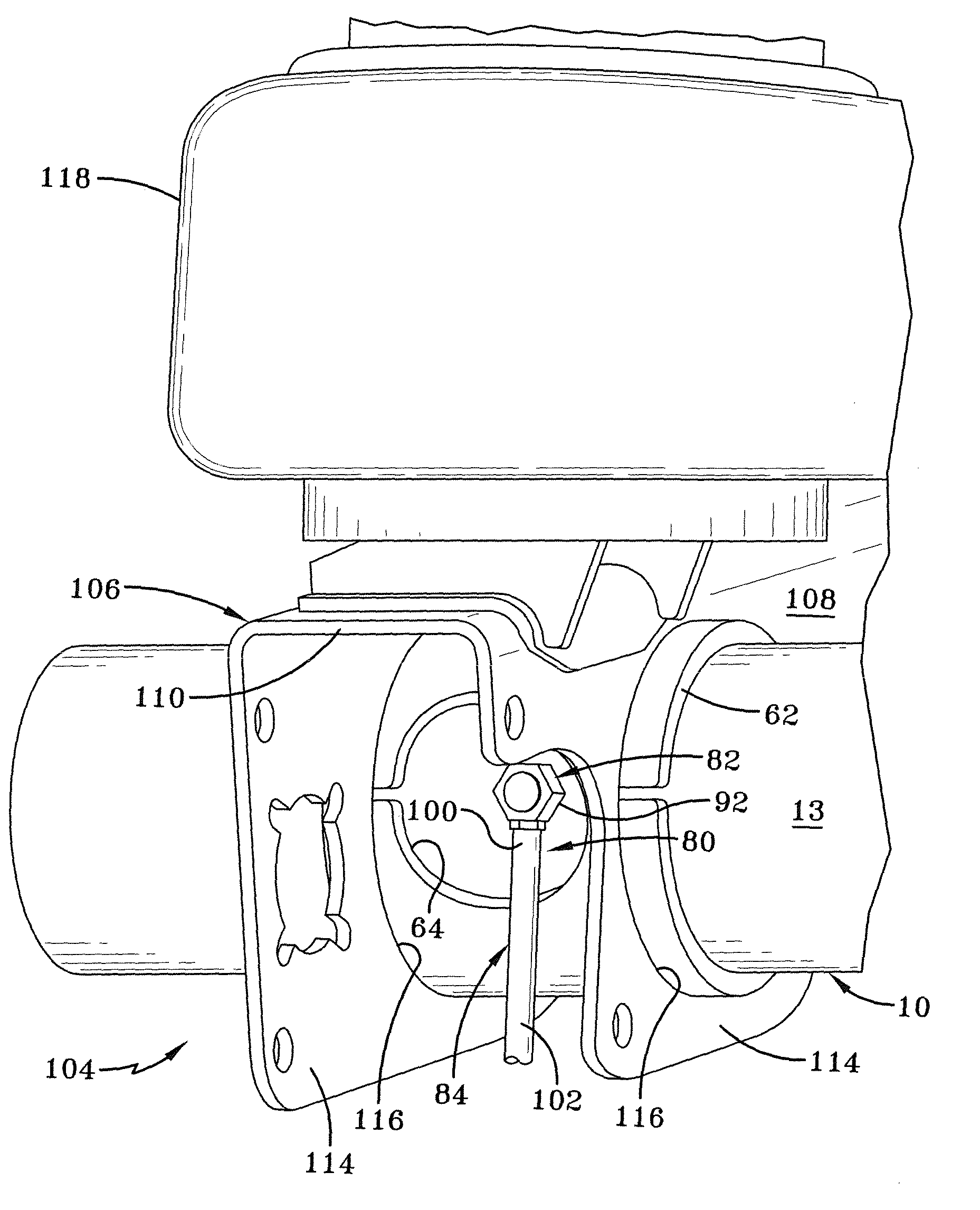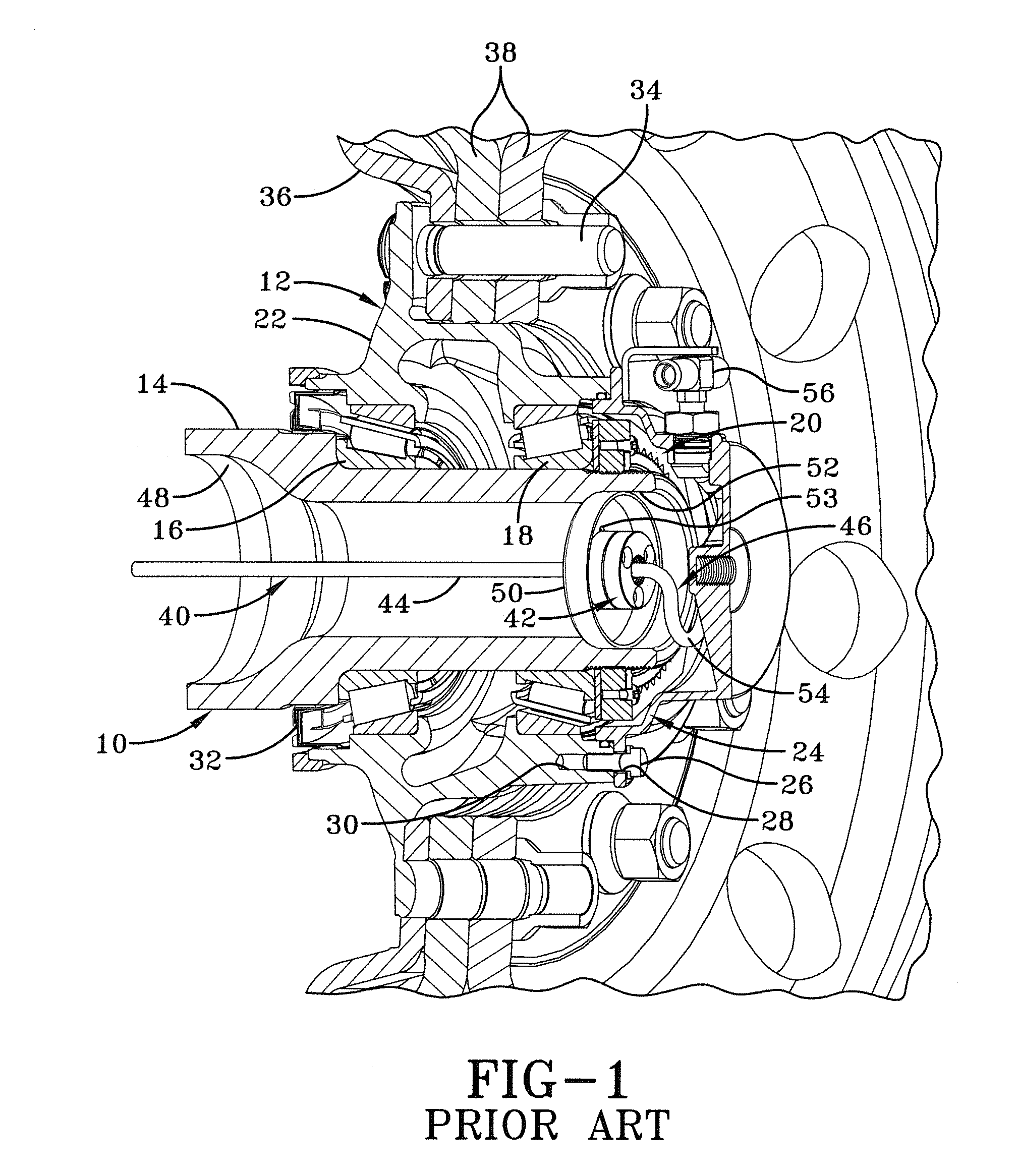However, it is well known that air may leak from a tire, usually in a gradual manner, but sometimes rapidly if there is a problem with the tire, such as a defect or a puncture caused by a road
hazard.
The large number of tires on any given heavy-duty vehicle setup makes it difficult to manually check and maintain the target pressure for each and every tire.
This difficulty is compounded by the fact that trailers of
tractor-trailers or trucks in a fleet may be located at
a site for an extended period of time, during which the
tire pressure might not be checked.
Any one of these trailers or trucks might be placed into service at a moment's notice, leading to the possibility of operation with under-inflated or over-inflated tires.
Such operation may increase the chance of less-than-optimum performance and / or reduced life of a tire in service as compared to operation with tires at the target pressure, or within an optimum range of the target pressure.
Likewise, should a tire encounter a condition that causes it to become significantly over-inflated, such as increasing pressure from an increased
ambient air temperature, the life and / or performance of the tire may be significantly reduced if the over-inflation continues unabated as the vehicle continues to travel.
The potential for significantly reduced tire life typically increases in vehicles such as trucks or
tractor-trailers that travel for long distances and / or extended periods of time under such less-than-optimum inflation conditions.
Such a need to maintain the target pressure in each tire, and the inconvenience to the vehicle operator having to manually check and maintain a proper
tire pressure that is at or near the target pressure, led to the development of tire inflation systems.
Should the supply line experience a leak or rupture, or should the
rotary union experience a leak, air pressure may build up in the hollow axle and the wheel end assembly.
If the pressure build-up remains unrelieved, components of the wheel end assembly may be damaged.
Therefore, the wheel end assembly also must be sealed to prevent leakage of the
lubricant, and also to prevent contaminants from entering the assembly, both of which could be detrimental to its performance.
In the event of a tire inflation system supply line or
rotary union leak, there may be a relatively high build-up in air pressure inside the axle and / or wheel end assembly.
Such an air pressure build-up may damage the wheel end assembly main seal.
If the main seal becomes damaged, it may allow loss of the bearing
lubricant, which in turn may undesirably reduce the life of the bearings and / or other components of the wheel end assembly.
In addition, relatively low air pressure build-ups may occur inside an axle and / or wheel end assembly of a heavy-duty vehicle that includes a tire inflation system, and of a heavy-duty vehicle that does not include a tire inflation system.
Such low build-ups in air pressure may occur due to any one of multiple causes, such as an increase in ambient temperature, dynamic heating of the components of the wheel end assembly as the vehicle travels, changes in
atmospheric pressure when the vehicle travels over roads with significant altitude changes, or a small leak in a supply line if a tire inflation system is employed.
Even such a relatively low build-up in air pressure inside the axle and / or wheel end assembly may undesirably reduce the integrity and / or the life of the main seal, which in turn may undesirably reduce the life of the bearings and / or other components of the wheel end assembly.
Moreover, when venting or exhausting an air pressure build-up to
atmosphere from an axle and / or wheel end assembly, contaminants may be introduced into the wheel end assembly, which may undesirably reduce the life of the bearings and / or other components of the assembly.
However, many of these hubcap venting devices lack the robustness to adequately prevent contaminants from entering the wheel end assembly, which may undesirably reduce the life of the bearings and / or other components of the assembly.
Such a location enables contaminants, such as water from a high-pressure
truck wash, to breach such venting devices and enter the wheel end assembly, thereby reducing the life of the bearings and / or other components of the assembly.
In addition, many of these prior art hubcap venting devices lack adequate flow to enable relief of
high pressure build-ups in the axle and / or wheel end assembly in the event of a tire inflation system supply line or
rotary union leak, thereby allowing the integrity of the wheel end assembly main seal to potentially be compromised.
Vent tubes are often utilized on drive axles because the gears inside the axle generate heat during operation, thus causing the air inside the axle to expand, creating a need to relieve excessive air pressure.
Because the tube is open to atmosphere, such vent tubes typically are not effective in preventing contaminants, such as water, from entering the axle.
For example, if a heavy-duty vehicle having such an axle vent tube is backed into a loading dock that is partially submerged in water, the tube may become submerged, which undesirably enables water to enter the axle.
However, the end of the hose which is opposite from the end that is attached to the axle is open, and therefore is not effective in preventing contaminants, such as water, from entering the axle.
However, the placement of the check valve on the end of the tube opposite the end that connects to the axle potentially exposes the check valve to undesirable damage from
road debris, thereby possibly compromising the integrity of the check valve.
If the integrity of the check valve is compromised, contaminants such as
moisture may be able to enter the tube and thus impede or obstruct the vent path, particularly if the
moisture freezes inside the tube.
Also, if the integrity of the check valve is compromised, contaminants may be able to pass through the tube and enter the axle and / or wheel end assembly.
Moreover, the preformed-loop tube may be difficult to install and / or adjust, as tightening or rotation of the fitting that provides the connection of the tube to the axle may impeded once the tube surrounds the axle.
Prior art means for relieving the build-up of air pressure in an axle and / or wheel end assembly also often lack the ability to equalize the pressure inside the axle to prevent a vacuum condition from forming inside of the axle and / or wheel end assembly.
More particularly, if the means for relieving the build-up of air pressure is unable to allow air to flow from atmosphere into the axle, fluctuations in ambient temperature may create a vacuum condition inside the axle.
Such a vacuum condition may undesirably shift the wheel end main seal from its overall position between the axle spindle and the wheel hub, and / or may shift the relative position of the components of the main seal, either of which may compromise the integrity of the main seal and / or reduce its life.
 Login to View More
Login to View More  Login to View More
Login to View More 


